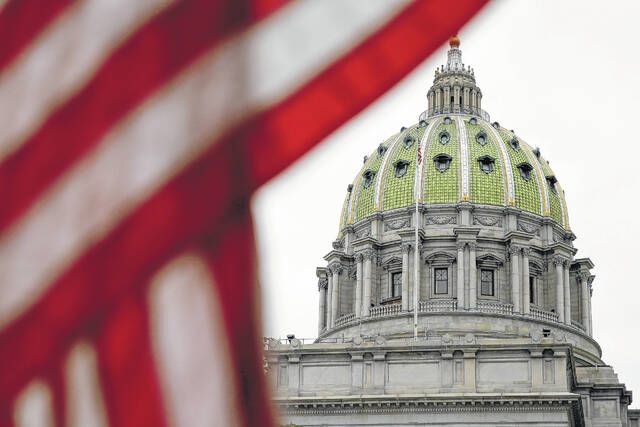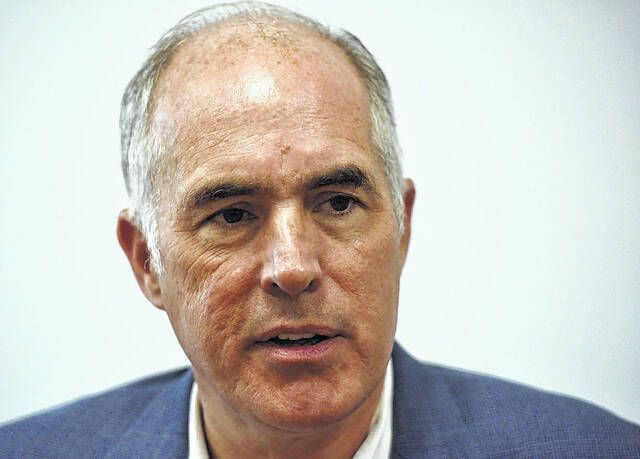Click here to subscribe today or Login.
Pennsylvania Acting Insurance Commissioner Michael Humphreys this week urged property owners to consider purchasing flood insurance to protect their homes, businesses, and possessions.
For many Pennsylvanians, flooding caused by heavy spring rainfall can be a common occurrence. Just one inch of water can cause $25,000 of damage to your home.
“Many homeowners do not realize that their standard homeowner’s insurance policy does not cover damage due to flooding,” said Humphreys. “Flooding becomes a real threat across all of Pennsylvania during the springtime rainy season, so we’re encouraging homeowners to review their policies now and consider adding flood insurance, either purchased through the rapidly growing private market or the National Flood Insurance Program.”
“Flood insurance is always a good protection to have in place, so you are prepared in the event of the unthinkable and risk to your home and possessions is mitigated,” added Humphreys.
Homeowners who live in federally designated Special Flood Hazard Areas (SFHAs) are likely required to have flood insurance by their mortgage lenders, however, the National Flood Insurance Program (NFIP) says one in four insurance claims comes from outside high-risk flood areas. Individuals looking to purchase new homes and properties should research before buying to determine if the area is prone to flooding, and homeowners who have paid off their mortgages should consider maintaining their flood insurance even though they may no longer be obligated to continue it.
Consumers should be aware that flood insurance policies are not active immediately. In most scenarios, there is a 30-day waiting period before policies are active; this prevents individuals from purchasing flood insurance solely when a storm is headed in the direction of their property. However, there are exceptions for this policy, including if the home was recently added to the federal government’s SFHA map, and if the home was just purchased and the lender requires flood coverage.
Flood insurance is available through both the NFIP and private insurers. Policies can be purchased through licensed property and casualty insurance agents in Pennsylvania to cover almost any building and its contents, including rental property and condominiums.
Renters can buy flood insurance protection for their possessions as well, which are typically not covered by either a standard renters’ insurance policy, or a landlord’s policy which covers the building.
“Flooding is a very real threat, no matter where you live,” said PEMA Director Randy Padfield. “While very few people want to consider adding expenses to their budget, flood insurance can bring peace of mind that you are financially protected from the devastation that flooding can bring.”
Padfield said another important preparedness step for families to take is to create a family emergency communications plan, so that everyone knows how they will stay in touch and communicate during an emergency. The plan should be practiced regularly so everyone is comfortable with it when the time comes to use it.
Padfield said free family emergency plan templates and downloadable checklists are available on the ReadyPA website. Consumers can also sign up for free weather alerts from a trusted local media source or AlertPA, subscribe to the monthly ReadyPA newsletter, and download the complete Pennsylvania Emergency Preparedness Guide.
Information on both the NFIP and private flood insurance is available on the Insurance Department’s one-stop flood insurance web page.
Casey announces millions in federal funding
U.S. Sen. Bob Casey, D-Scranton, this week announced an additional $19,353,129 in federal funding to help low-income families and seniors with their home energy costs through the Low Income Home Energy Assistance Program (LIHEAP), bringing Pennsylvania’s LIHEAP total over the past year to $503,242,791.
“Pennsylvania has received a record-breaking half a billion dollars in the past year to help families afford their energy costs, thanks in part to the American Rescue Plan and the infrastructure law,” Casey said. “For low-income families across Pennsylvania whose budgets are being squeezed even tighter by inflation, this is welcome relief knowing they can keep their homes warm in the winter and cool this upcoming summer.”
This is the fourth LIHEAP funding release over the past year. In May 2021, Pennsylvania received $297,671,482 in LIHEAP funding from the American Rescue Plan. Pennsylvania also received $182,800,295 in LIHEAP funding in the regular appropriations process for the first 4.5 months of FY22.
Pennsylvania then received $3,417,885 in LIHEAP funding in January 2022 from the Infrastructure Investment and Jobs Act. Today’s announcement of $19,353,129 — from the FY22 appropriations bill passed last month — brings Pennsylvania’s total to more than half a billion dollars. This is the largest investment in the LIHEAP program in a single year since the program was established in 1981.
Sen. Casey also announced $264,847,619 in federal funding for Pennsylvania from the U.S. Department of Transportation’s Federal Highway Administration to reduce carbon emissions and develop carbon reduction strategies.
The funding, made possible by the new Carbon Reduction Program (CRP) created by the Infrastructure Investment and Jobs Act (IIJA), will be used to help states reduce carbon emissions from the transportation sector, including new infrastructure to support electrification of vehicles and projects to construct Bus Rapid Transit corridors. Pennsylvania has already received $50,892,693 of this IIJA carbon reduction funding for 2022.
“This funding is a positive step towards decreasing carbon emissions, thanks to the Biden Administration and the infrastructure law,” Casey said. “By investing in new projects to reduce pollution on our Nation’s highways, we can ease the burden on our planet, lower costs for families and create infrastructure jobs. I will continue to bring infrastructure funding home to Pennsylvania and advance projects to combat the climate crisis.”
In 2018, the transportation sector accounted for 25 percent of all Pennsylvania greenhouse gas emissions and the Commonwealth was responsible for approximately 269 million metric tons of carbon dioxide equivalent being emitted into the atmosphere.
PennDOT, PSP highlight litter enforcement corridors
The Pennsylvania Department of Transportation (PennDOT) and the Pennsylvania State Police (PSP) have collaborated to discuss penalties of littering and littering in a Litter Enforcement Corridor.
PennDOT and PSP held a press event this week in Lackawanna county to explain what Litter Enforcement is, why it’s important and what the penalties are for littering.
“PennDOT District 4 is proud to partner with the Pennsylvania State Police and Keep Pennsylvania Beautiful today to highlight our efforts to reduce littering in northeast PA. PennDOT relies on volunteers in the Adopt a Highway program to help us keep roadways clean and free of litter”, said PennDOT Assistant District Executive Jonathan Eboli, P.E. “We encourage everyone to get involved with the Adopt-A Highway Program in their community.”
Litter Enforcement Corridors have a high aesthetic or historic value worth preserving or need some additional help with litter issues. Approved segments are marked with signs to notify motorists of additional litter fines: doubled penalties for motorists caught scattering rubbish and tripled when it is done by a commercial business. Litter Enforcement Corridors also offer increased safety for workers or volunteers who are picking up trash in a designated corridor.
Wolf announces 2 Hazleton water projects
Gov. Tom Wolf this week announced the investment of $199 million for 13 drinking water, wastewater, stormwater, and non-point source projects across 11 counties through the Pennsylvania Infrastructure Investment Authority (PENNVEST).
Two of the projects are in Hazleton City.
“Ensuring the reliability of our most precious infrastructure is vital to the road to recovery for many of our communities,” said Gov. Wolf. “As we prepare for much-needed increases in federal and state resources, like those in the Infrastructure Investment and Jobs Act that will bring more than $240 million to Pennsylvania next year alone for clean water infrastructure, I am confident that these projects will pave the way for successful growth and revitalization.”
• Hazleton City Authority — received a $3,300,000 loan to replace and relocated existing pressure-regulating valves, currently located in below-grade pits, to above-grade installations. The project will increase system reliability and eliminate unaccounted-for water loss.
• Hazleton City Authority — received a $1,857,220 loan to make improvements to an existing, damaged pump station, which is a critical component of the authority’s system and key to the authority’s drought planning strategy. The project will restore reliable drinking water to a major portion of the service area while also modernizing a completely inoperable facility.
Reach Bill O’Boyle at 570-991-6118 or on Twitter @TLBillOBoyle.











